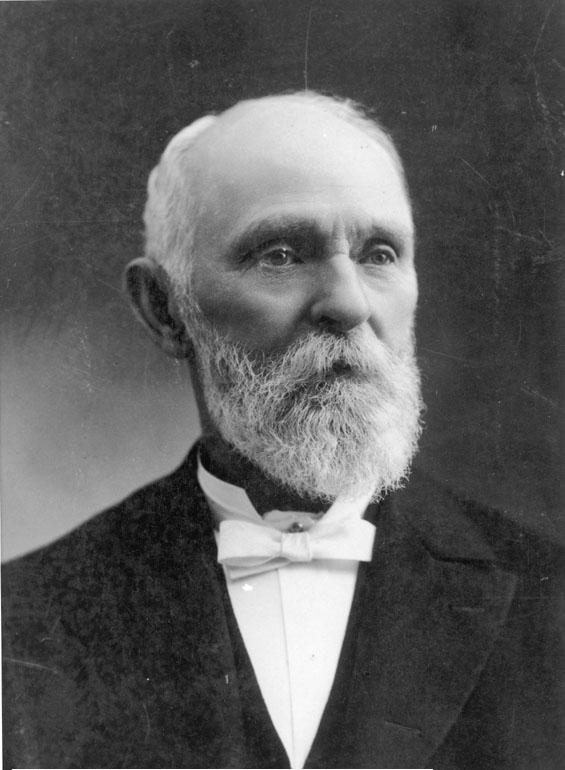
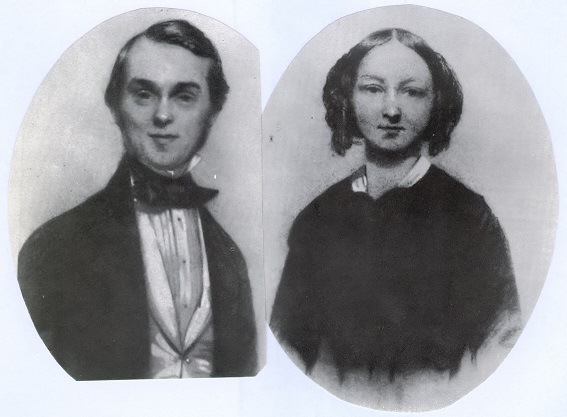
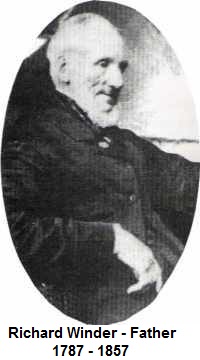
John Rex Winder (and Ellen)
BORN: 11 Dec 1821, at Biddenden, Kent, Eng. to Richard and Susan Sophia Winder
MARRIED: 21 November 1845 to Ellen Walters at London England
Died: 27 Mar 1910 at Salt Lake City, Utah
BURIAL: City Cemetery, SALT LAKE CITY, SALT LAKE, UTAH
Winder History website
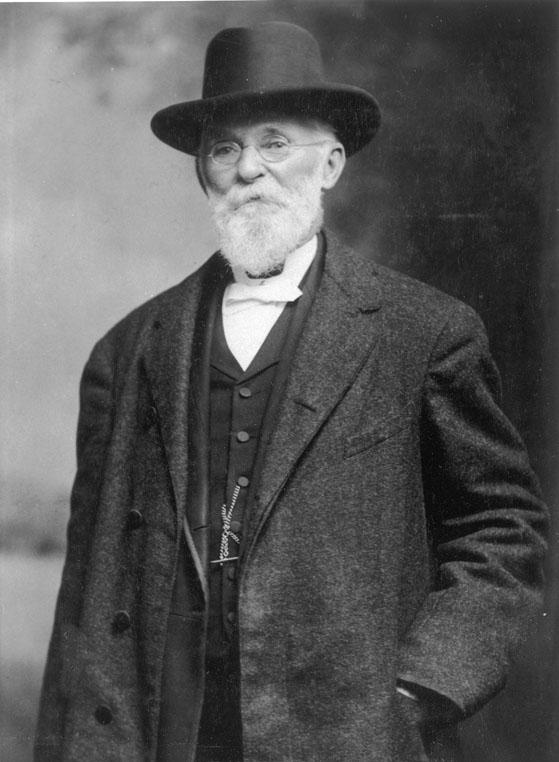
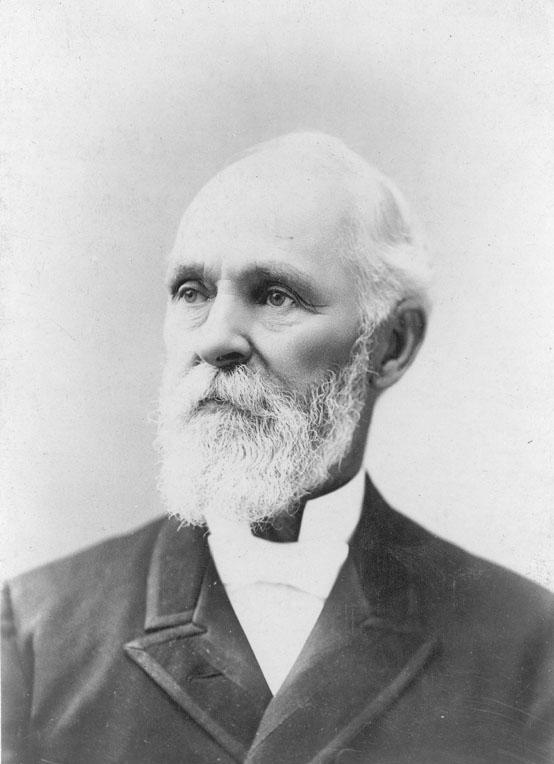
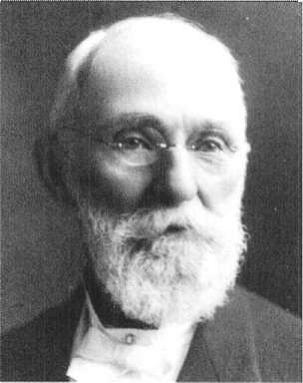
First Presidency - John Rex Winder (1st Counc.) Joseph F. Smith(Pres.) Anthon H. Lund (2nd Counc.)


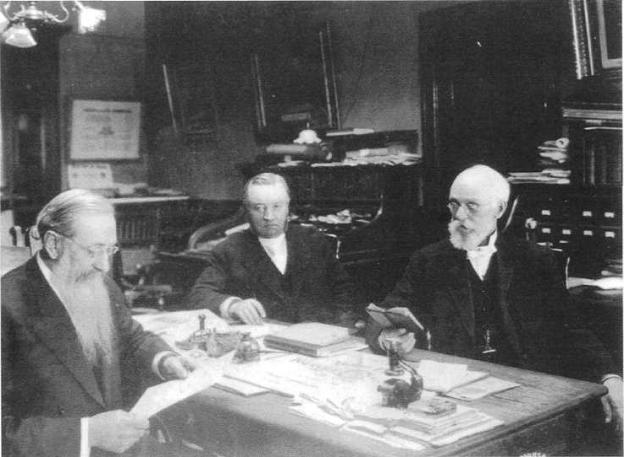
First Counselor in the First Presidency
October 17, 1901 (1901-10-17) – March 27, 1910 (1910-03-27)
Called by Joseph F. Smith
Second Counselor in the Presiding Bishopric
April 8, 1887 (1887-04-08) – October 17, 1901 (1901-10-17)
Called by William B. Preston
End reason Called as First Counselor in First Presidency
John Rex Winder ( /'w?nd?r/; 11 December 1821 – 10 March 1910) was a leader and general authority of The Church of Jesus Christ of Latter-day Saints (LDS Church). He was Second Counselor in the Presiding Bishopric from 1887 to 1901, and First Counselor in the First Presidency to Church President Joseph F. Smith from 1901 until his death. He was well known for his business abilities, and influenced Heber J. Grant. He was also active in politics and the militia, fighting in the Utah War and the Black Hawk War (Utah). When the church came under heavy persecution for their belief in plural marriage, he held the church's assets to keep them from being seized by the federal government.
Early lifeJohn Rex Winder was born December 11, 1821 to Richard and Sophia Collins Winder in Biddenden, England. He worked in several trades as a youth, settling into a position as a shoe and leather man in his twenties in London. There he married Ellen Walters in 1845. There also he was recruited to manage a shoe store in Liverpool.
In the shoe store, he discovered The Church of Jesus Christ of Latter-day Saints and joined as a member. In February 1853, he and his wife set out to Utah to join the church there. He traveled across the Atlantic Ocean, nearly succumbing to smallpox on the way. He then traveled via steamboat up the Mississippi River to St. Louis, Missouri, where he caught another boat leading up to Keokuk, Iowa. From there he traveled with a company of members heading towards Utah under Joseph W. Young. They arrived safely on October 10, 1853.
Utah lifeEngaged in leather work, he was quite successful in several ventures. His business sense became recognized and eventually he found seats on several corporate boards. Of his ventures, one remains today: Winder Dairy. John R. Winder was generous with his wealth. The poor, orphans, and widows benefited greatly from his efforts.
John R. Winder also became a figure in politics and the militia in the territory. He led the Nauvoo Legion to stop the advance of Johnston's Army in the Utah War of 1857. In the Black Hawk War (Utah), he fought as Adjutant General. He was the chief aid to General Daniel H. Wells, and wrote up the expense report submitted to congress at the conclusion of the conflict.
John R. Winder also served as chairman of the People's Party. His efforts to modernize the exercise of politics in the territory led from the church-dominated system to a two-party system much like the national political system. Serving as a delegate to several state constitutional conventions, he was an instrument in Utah Territory achieving statehood.
General authorityChurch President John Taylor called John R. Winder to serve as Second Counselor to Presiding Bishop William B. Preston on April 8, 1887. During this time, the federal government began to antagonize the church for its practice of plural marriage. After the passage of the Edmunds-Tucker Act in 1887, church leaders went into hiding and church assets were distributed to be kept from being seized. John R. Winder assisted many people on the run from the federal government, by helping to hide them or to post bail. His poplar farm on the south of the city served as a temporary Church headquarters for President John Taylor.
Church President Wilford Woodruff approached John R. Winder, Charles W. Penrose, and George Reynolds to review and edit the manuscript of the 1890 Manifesto. With the publication and announcement of the manifesto, federal persecution stopped.
Another significant contribution of John R. Winder during his tenure as Second Counselor in the Presiding Bishopric was his work on the interior of the Salt Lake Temple. He managed the interior work to be done, and completed it much ahead of schedule. That earned him praise from leaders of the church. After the dedication, John R. Winder served as First Assistant to Temple President Lorenzo Snow. He remained in the presidency of the temple until his death.
He was called to the First Presidency as First Counselor to President Joseph F. Smith on October 17, 1901. One of the notable efforts of that administration was the legal fight to get Reed Smoot seated as a senator in the Smoot Hearings. They also published a proclamation called The Origin of Man in 1909 that clarified the Church's position on human evolution and reaffirmed that men are the children of God and were created by him.
Winder died on March 27, 1910 in Salt Lake City, Utah of pneumonia.[1] He was buried at Salt Lake City Cemetery. Anthon H. Lund succeeded him as First Counselor in the First Presidency.
Apostle?Having never been a member of the Quorum of the Twelve Apostles prior to his call to the First Presidency, a rarity, there has been some dispute as to whether or not Winder was ordained an Apostle at the time of his appointment as first counselor. The LDS Church has no record of Winder being ordained to the office of Apostle.
Family lifeJohn R. Winder married Ellen Walters in London in 1845. With her consent, he married Hannah Thompson in Salt Lake City in 1855, Elizabeth Parker in 1857, and later, Maria Burnham in 1893. Through these women he bore 20 children.
Maria Burnham was from Fruitland, New Mexico Territory, where the LDS Church congregation was named the Burnham Ward because of her family's prominence in the early history of the area.
A small scrap of paper on the floor of the London leather shop attracted the attention of John Winder, one of the shoemakers. Someone had torn up a letter and had dropped it, and John felt impressed to pick up one small piece. He puzzled over the words on the fragment—”Latter day Saints.” He had never heard or read the name before. A fellow worker was able to tell him a little about this American church, including the fact that a branch of the church held regular meetings in London. He went to their meeting, crept up the back stairs, and peered through the banister. Elder Orson Spencer was preaching. “I thought he knew I was there,” John said, “for every word he spoke fit my case and seemed to be for my express benefit.”[1] Very soon John and Ellen Winder were baptized and began making plans to go to America. Five years later, in 1853, they and their three children sailed for Zion. While on the voyage, John contracted smallpox and became very ill. He overheard the sailors say that his body would be the next one they would have to cast into the sea. The faith and prayers of his wife and children and the priesthood blessing of his brethren enabled him to prove the sailors wrong.
Plying his skill with leather in Salt Lake City, John began making boots and saddles and later went into the tanning business with several partners, including President Brigham Young. As a captain in the Utah Nauvoo Legion, John and fifty militia men were among the units assigned to guard Echo Canyon against the U.S. Army during the fall and winter of 1857–58. Distinguishing himself in various military expeditions, including the Blackhawk War, Brother Winder earned the rank of lieutenant colonel. In addition to holding more than a score of prominent governmental and business positions, Brother Winder presided as patriarch over a large family of four wives and twenty children.
In 1892, while he was serving as a counselor in the Presiding Bishopric, Church leaders decided to try to finish the construction of the Salt Lake Temple by the next April, making the building time forty years from start to finish. Bishop Winder was given the responsibility and the credit for seeing that the 250-man crew met this deadline. After the dedication on 6 April 1893, he was called as first assistant to the temple president, Lorenzo Snow. His humility is evidenced by his reaction to being selected by President Joseph F. Smith to serve in the First Presidency of the Church on 17 October 1901: “To think that one who had sprung from the source I had, without any education . . . slow to speech, feeling as though I could pass through the floor whenever I am called upon to speak to the people—was it possible that President Smith could choose me for his counselor?”[2]
At the time of Brother Winder’s death nine years later, President Smith gave this evaluation: “If any man loved him any more than I do, I say God bless that man. In his military career and all other phases of his life, he never sought office or honors; they were always in search of him. Heaven itself could scarcely be more true than President Winder was true.”[3]
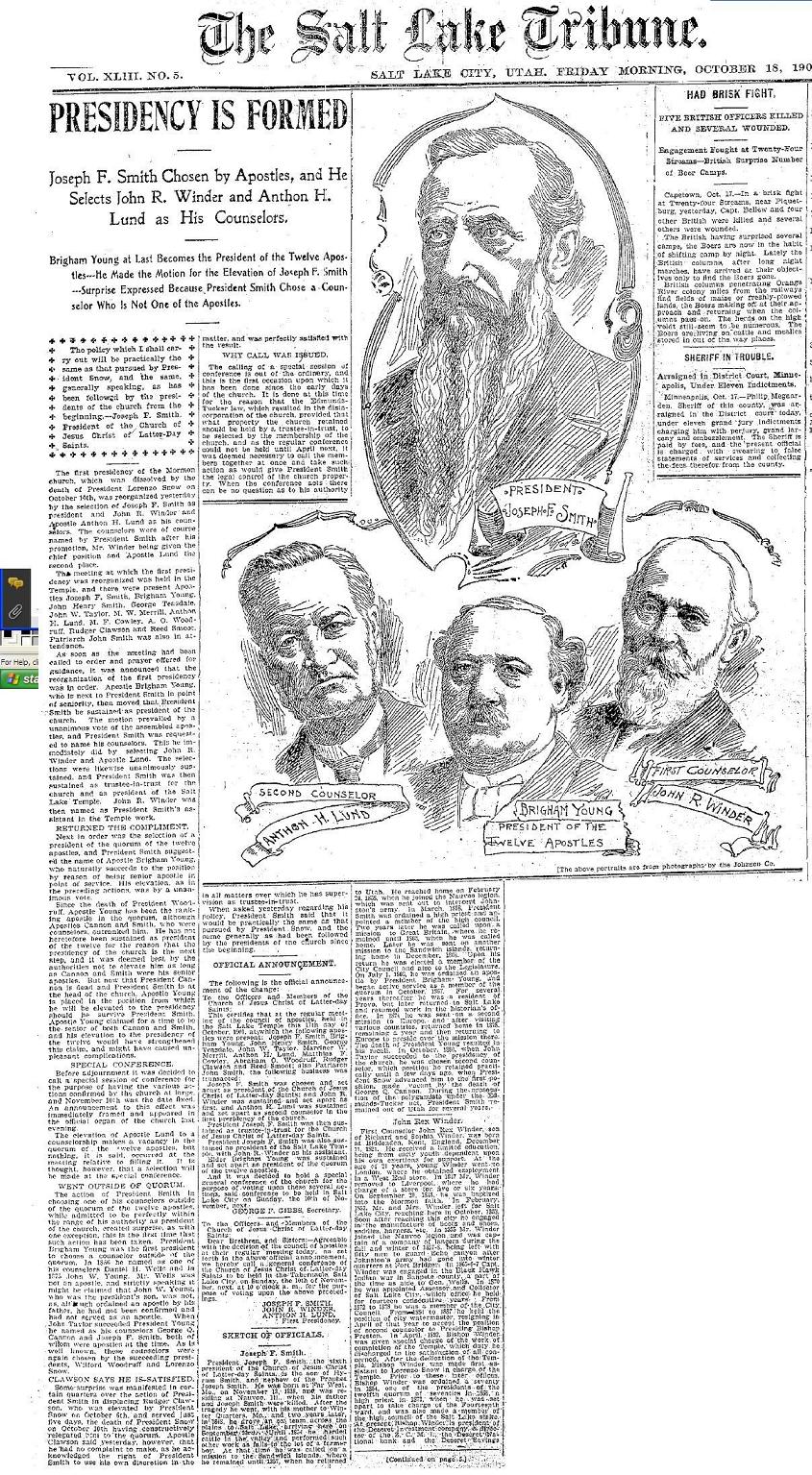
1880 Census
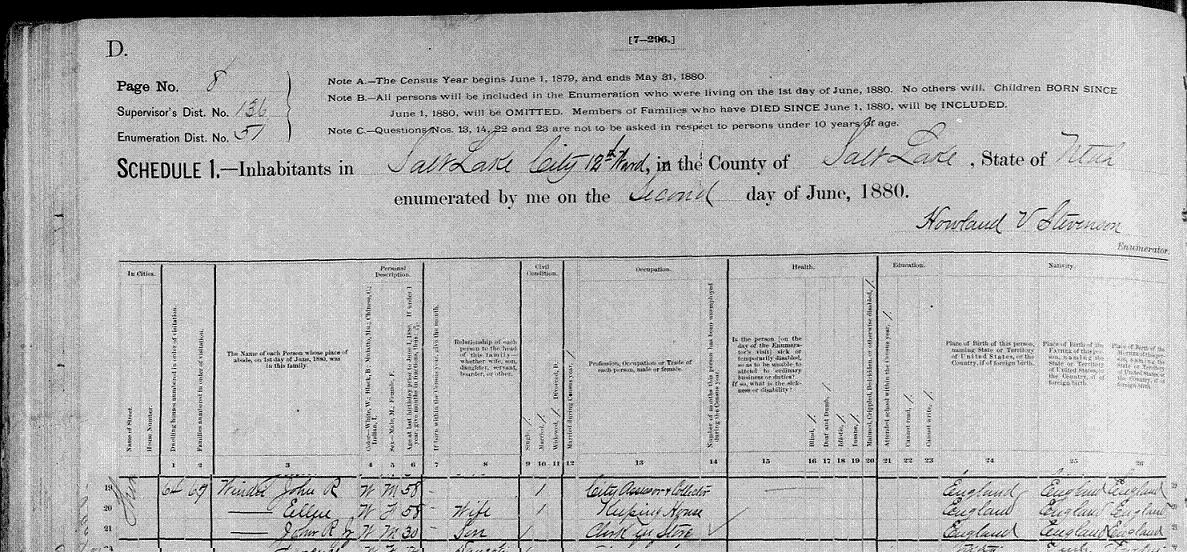
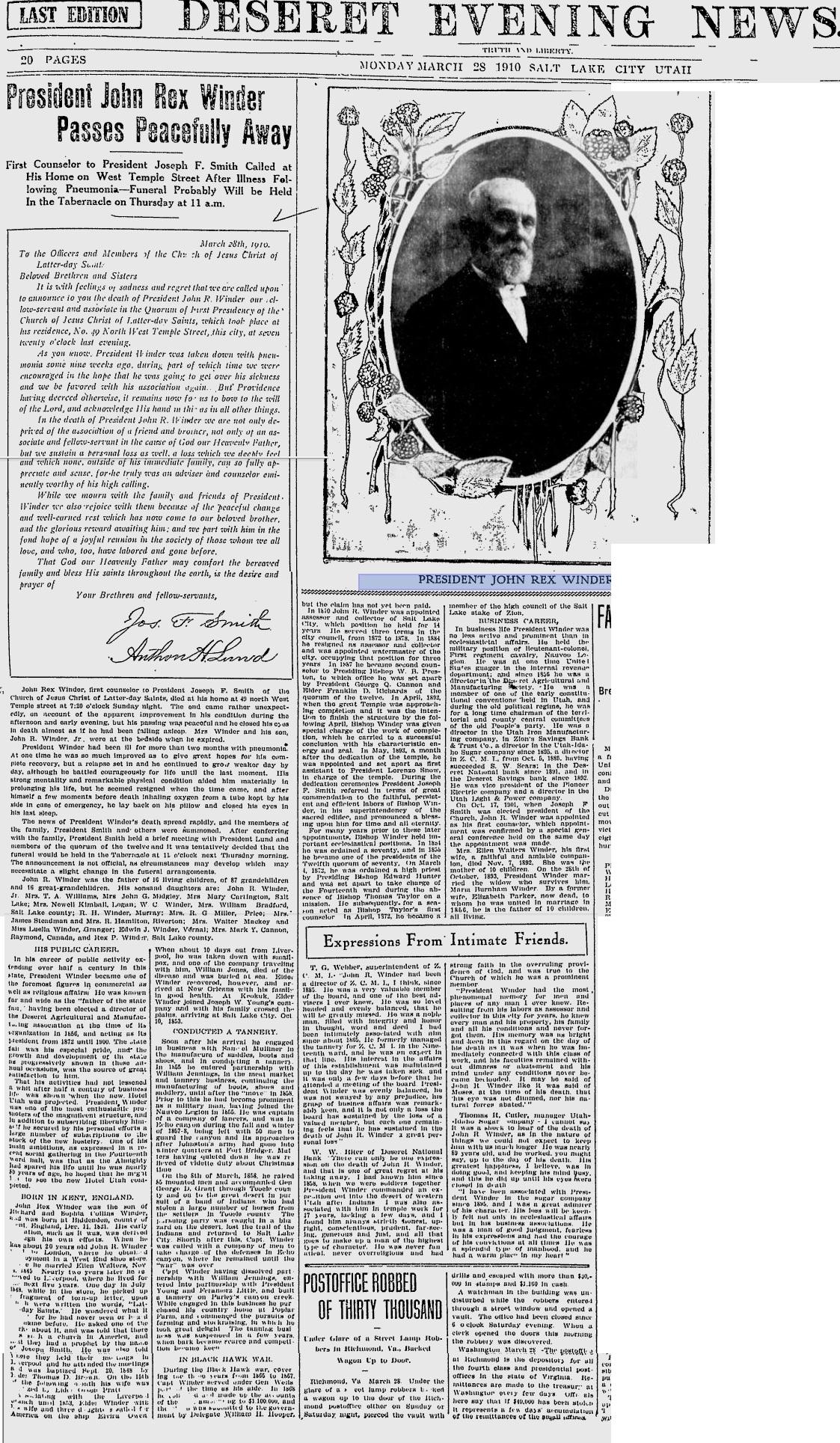
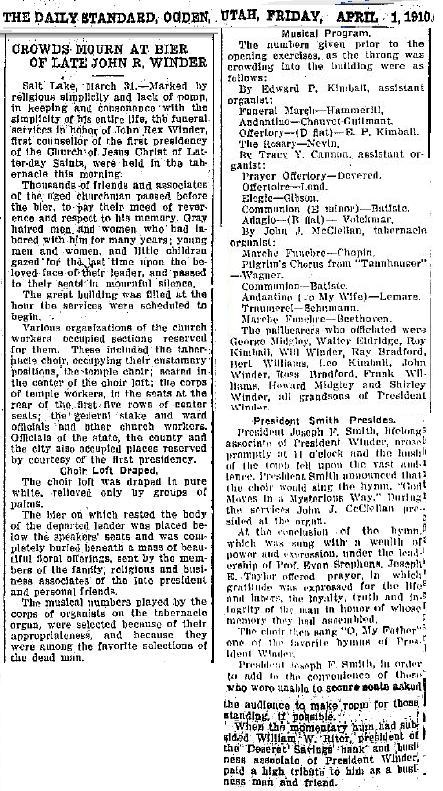
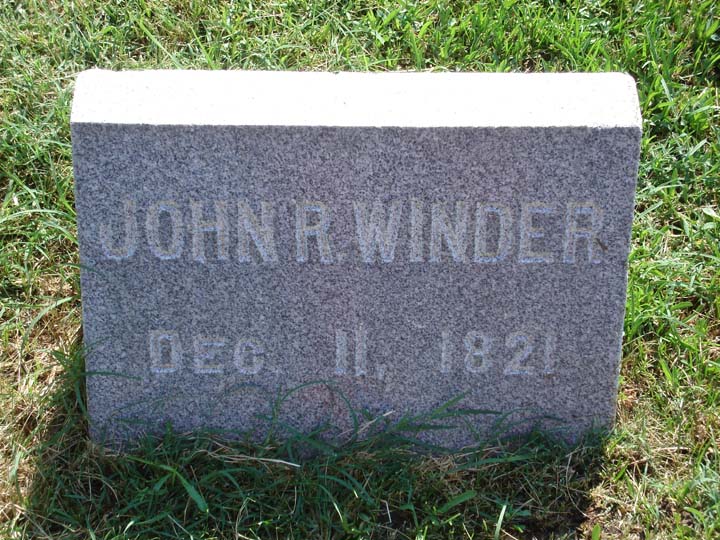
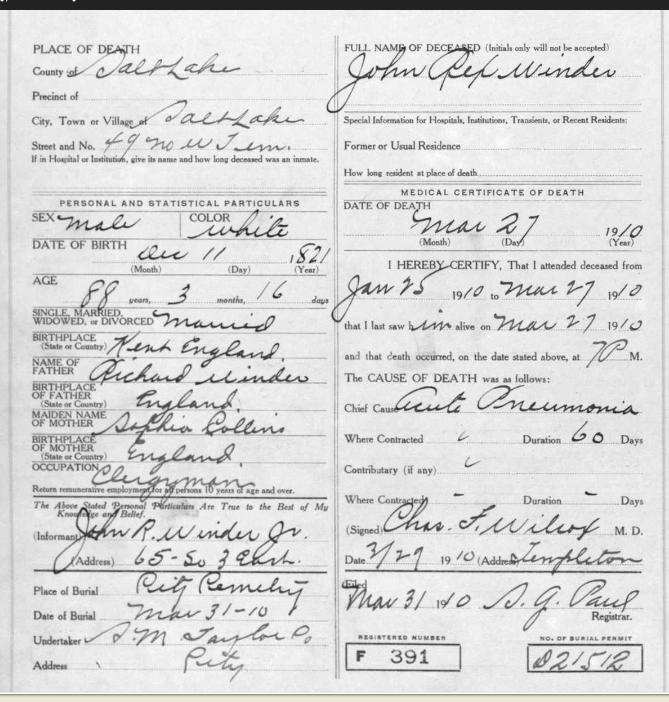


CHILDREN
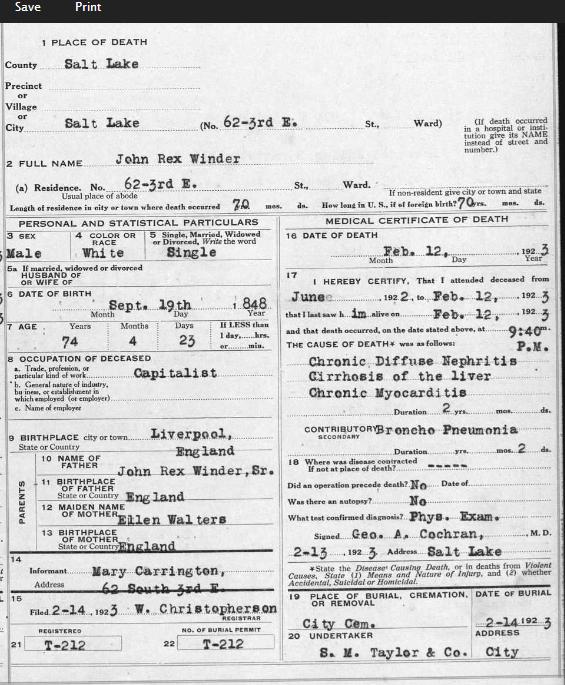
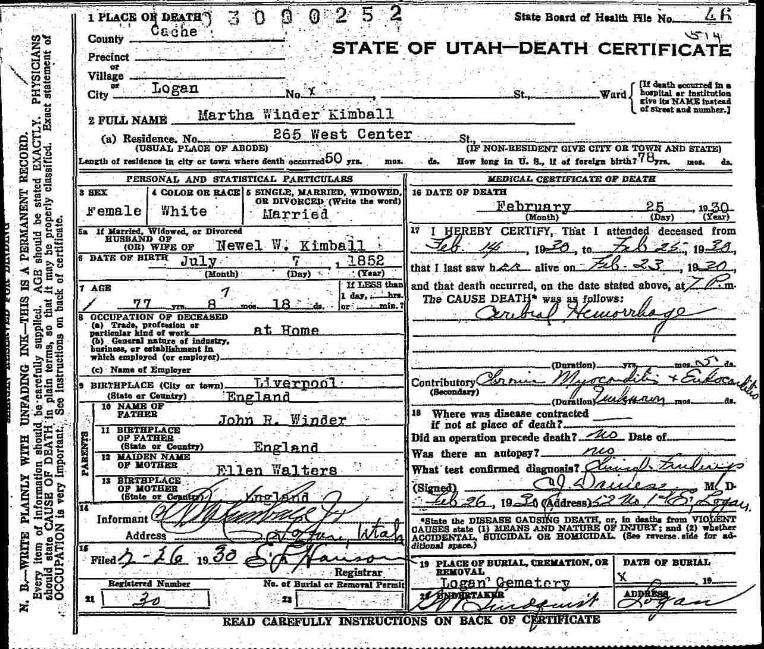
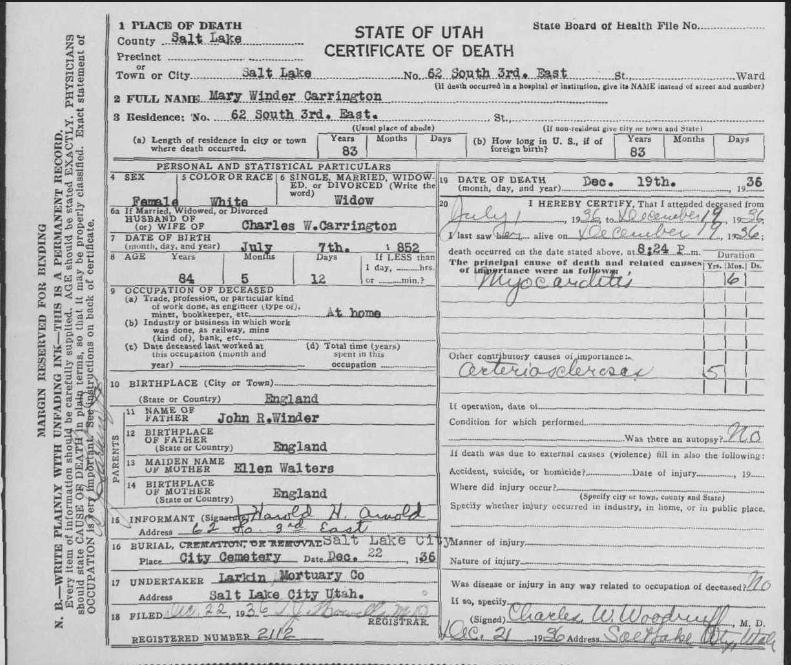
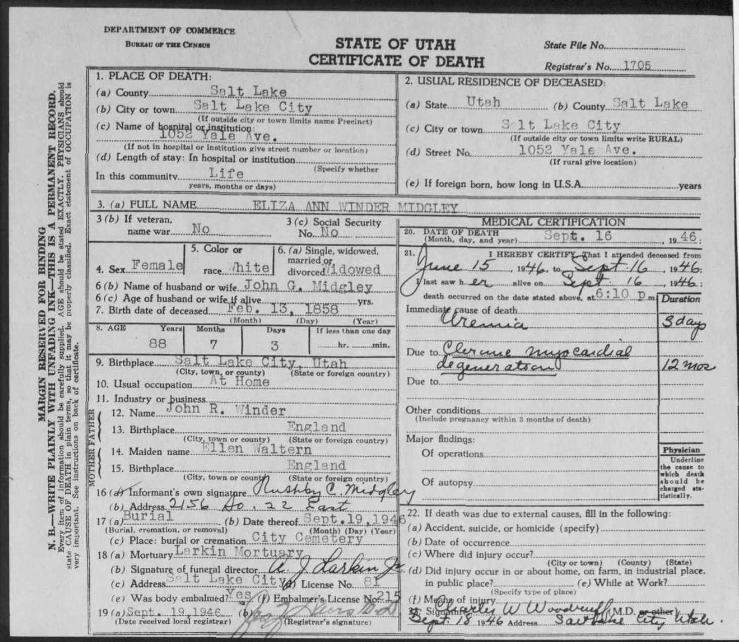
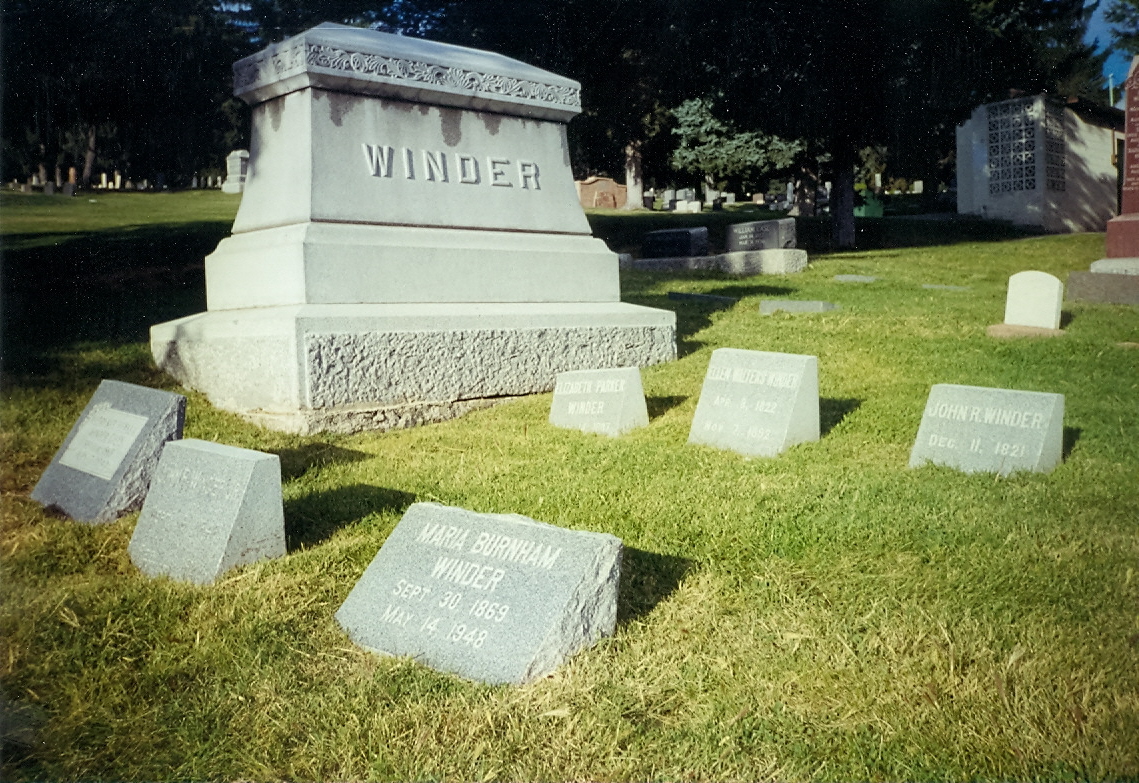
Return to top
HOME
























